We’ve all got games we love that others don’t see in quite the same light. Sure, they have obvious flaws and glaring mistakes but there’s something there that keeps us coming back and we often try to make other players see what you see in the game. In today’s feature we’ve decided to list some of our favorite games that we feel are underrated on the Dreamcast. You may or may not agree but at least we can try and explain what we see in some of these less-than-stellar games.
Hit the jump to read on!
Chef’s Luv Shack
Mike Kyzivat: This game isn’t all that great, but there is something about it that makes it fun to play. It is basically a public access game show starring Chef from South Park as the host and the contestants are Cartman, Kyle, Kenny and Stan (up to 4 players). The game consists of a series of questions where the player picks from various funny categories. The questions are mostly pop culture questions and after about 4 hours of playing you will see them repeated over and over again. There are also load times between questions which is annoying, but at least they are short. After 3 questions you then move on to a mini game round where you play various simple games like in the Mario Party series. You could be keeping your parachuting character alive in a wind storm or having a pie eating contest. Each mini game earns you a lot of points, so much so, that you can get all the questions wrong and still win the contest by winning all the mini games. So why is this game a hidden gem? Well I think it’s mostly the presentation. The 4 kids are always making smart ass comments and some of the mini games are fun. It’s also fun to play with other people. In fact, I don’t recommend this game unless you have a couple of friends to play it with. If you like the humor of South Park and beating your friends or siblings in mini games then this game is for you.
Legacy of Kain: Soul Reaver
Michael Westgarth: Nosgoth, once a land dark fantasy where the course of time was constantly watched over and manipulated by those seeking to maintain the balance. Refusing to play his part in the predetermined tapestry of time, the eponymous Kain becomes the vampiric overlord of a dying world. Being the second game in the series, Legacy of Kain: Soul Reaver tells the tale of Raziel, the Lieutenant of Kain’s vampire army, cast into a deathly abyss after gaining the power of flight and surpassing his master’s abilities.
Resurrected a millennium later by an ancient deity and imbued with the power to consume the souls of the vanquished, Raziel stalks the spiritual netherworld of the now dead land of Nosgoth, at the very end of time itself, seeking revenge on his former vampire brethren.
This is the first game I remember playing with such an adult orientated, and well-written story. The dialogue, delivered by some of the best voice in-game voice acting I’d heard, struck me as something straight from an forbidden Shakespearean manuscript. Complementing the engrossing story was a huge gaming world with no loading times and a wonderful musical score that uncomfortably highlights the death and decay ridden world surrounding you.
Enhanced by Raziel’s ability to slip between the spirit world and the material world, instantly warping the environment around him, 3D platforming, combat and puzzling was some of the best around at the time. Killing and consuming the souls of each of our anti-hero’s former brothers-in-arms would grant him a new ability that would allow him to explore the land further, for example swimming, climbing, telekinesis and of course the ethereal Soul Reaver sword itself.
I originally played a combination of the PC and Playstaion version of Legacy of Kain: Soul Reaver, getting the Dreamcast version later for its enhanced graphics, although no other features were added. I cannot praise this masterpiece of interactive storytelling enough and implore anyone who hasn’t given it a whirl in their dream-machine to pick it up immediately.
Slave Zero
Scott Morrison: The best way I can quickly describe Slave Zero is thus: combine Quake and Doom, and put the game in a third-person view, where you play as a giant robot hell-bent on destroying the tyrannical leader of a futuristic society. That’s Slave Zero in a nutshell. For most reviewers back in the day, this was not enough for a game to be entertaining, but for me it was simplistic shooting fun at its best. In 1999 it was amazing to see a lively city composed of well-lit buildings, bustling streets, and random billboards. Slave Zero had all of this, and you were rewarded for crushing it all under your metallic foot. The missions were easy enough: shoot some bad guys, go to this spot, blow up some generators, fight this boss. Rinse and repeat for mindless fun. The art style of Slave Zero reminds me of a more polygonal version of Blade Runner. The neon lights mixed in with the overall dark atmosphere show you that the world really has gotten pretty bad and it’s up to you to change things. And no, I did not just read that off an 1980’s VHS cover. Slave Zero also some issues with its control scheme, but once you get past them it’s a fun game. Amazingly enough, the game has a 4-player split screen mode. Remember those? If you have some friends over who enjoy a brainless shooter then I definitely recommend popping this in. Speaking of friends, I just realized I leant this to someone back in 2001 and never got it back. Excuse me while I explore eBay, for the good of mankind.
Capcom vs. SNK
Flake: I know what you’re thinking: How is Capcom vs SNK 2 an underrated game? And that’s the point of this entry. When people think of Capcom vs SNK, they automatically think of the sequel. The original CvS gets almost no love and that is a shame because it should be held up as the blue print on how to do a cross-over fighter. Sure, CvS2 had a roster that rivaled even Marvel vs Capcom 2, but the original CvS made the characters it did have matter.
There were more interactions, more nods to past games, more quirky introductions, more fan service in general. It was also a much more balanced game. Where as CvS2 felt like a game you played for the audacity of it all, the original CvS actually felt like a completed fighter that was worth taking seriously.
South Park Rally
Tom Kyzivat: Racing games! I’m not a huge fan of racing games–especially ones that don’t offer much variety outside the basic ingredients. Realistically, South Park Rally really only offered those basic ingredients, but you have to hand it to them that they really did their homework and made it feel genuinely South Park. I put my love of South Park ahead of my apathy toward racing games, and I’m glad I did! It featured nearly every character anybody could think of from the show (at the time–sorry, Towlie fans), several really creative and original levels based on episodes, and had an overall great sense of humor. Cartman even rides his police big wheel! The tricky part was that it was pretty hard to unlock all the characters, and while the game saved your records and unlocked goodies, you couldn’t save your progress through the levels. Every time you played, you had to start from the first stage. Rough. That, along with the fact that outside of the South Park flavor, the game didn’t add much to the racing genre, might have been the reason that it was mostly overlooked by gamers. South Park was relevant enough at the time, but I think they had trouble finding a game genre that made sense for the franchise. In the end, a racing game was more of a gimmick. While all the references and nods felt loyal to the show, it didn’t exactly realistically tie in to the show itself–but to me it was still a fun experience, and a good time for any South Park fan. What should everybody do? Respect its authoritah!
Super Magnetic Neo
Josh Newey: I’ll put this out there right now–this game’s basic conceit is one of the cleverest I’ve seen in any 3D platformer. You play as Neo, an adorable albeit creepy little man with a magnet connected to his noggin. Throughout each stage, you utilize the positive and negative charges to grab, swing, and bounce against various magnetically charged items. For example: if an enemy has a negative charge, use your positive charge to collect him up. If you use a positive charge on a positively charged jump, you’ll bounce off of it. The downside of such a brilliant concept is that it’s also overly complex at times and grows rather confusing in certain stages. Training your brain to trigger the right charge at the right moment can become one hell of a task, and since Neo dies with a single hit, this game quickly becomes one of the toughest that the Dreamcast has to offer.
That being said, I still find myself returning to Super Magnetic Neo, as it still stands out as one of the more interesting and unique platformers that the Dreamcast had to offer. Its visuals are refreshingly colorful and vivid, even by today’s standards, and the Crash Bandicoot-esque stages ask for a lot more strategy and thought than many simpler games of the time. If you love the Dreamcast and miss lighthearted, ridiculously difficult platformers of yesteryear, this game is bound to elicit some smiles. Just don’t be surprised if those smiles are through gritted teeth.
Pro Pinball Trilogy
Mike Kyzivat: Now I admit I have never played Pro Pinball, which is astonishing to me because I don’t know how I missed this pinball game. From the videos I’ve seen on You Tube they have shown some really creative table design and some really good ball physics. Granted, it still looks like a sprite ball moving along a pre-rendered background, but it’s the most convincing one I’ve seen. The game consists of three tables: Timeshock, Big Race U.S.A and Fantastic Journey. Time shock (looks to me) to have the most on the playfield with a big green time machine in the middle of the playfield (at least that’s what it looks like), there are also many wire frame ramps to shoot as well. Big Race U.S.A is modeled after highways and byways and has a whole map of the United States of America with lights in certain points of interest. The goal (I’m guessing) is to visit each landmark. Plus, it also has a talking cab that you can hit with the ball. The final table is called Fantastic Journey, and is modelled after a Jules Verne’s novel, with a steam punk aesthetic. It looks like you are collecting parts to build a machine to take you on a trip somewhere, let’s say fantastical? Overall they look like great pinball tables and it’s too bad I never got a chance to try them out. I hear that the original company (now under a different name) is funding a kickstarter project to get these remade for the current gen systems, which would be great.
Vigilante 8: Second Offense
Scott Morrison: If anyone tells you that Twisted Metal is the best car combat game out there then they have clearly never played the Vigilante 8 series. More importantly, they need to play Vigilante 8: Second Offence. The V8 series takes place during the 60s and 70s and does not take one bit of itself serious. How could you take yourself seriously when you have a character driving a bus whose special attack is his fart gas going through the exhaust pipe? V8:Second Offence has a plethora of creative characters with clever cars and special attacks ranging from subwoofer shockwaves, to giant lasers, to heat-seeking UFOs. The game actually follows a story, which is always interesting in car combat games because all the story has to do is make a somewhat coherent connection to destroying anything else on wheels. Second Offence actually added a good bit to the car combat genre with collectable upgrades, customizable paint jobs, and arena altering abilities. The upgrades are taken from your destroyed opponents, which enhance your vehicle’s speed, targeting, shield, and acceleration. Interesting enough, once an upgradeable area is maxed out your vehicle’s physical appearance will change. You can also “customize” your paint job simply by changing your color and sharpness of textures, but if you would rather drive around as Optimus Prime than a giant yellow MAC truck then so be it with some red spray paint. The game’s physics are the most ridiculous and unrealistic that I have still seen to date, and I think that may be why I love the game so much. I love the ability to, as a prison bus, driving straight up a cliff just by using my turbo and then being able to continually spin in 360 degrees while farting on every opponent around me. There is also a sense of satisfaction using the “crater maker” combo and doing just that with your opponent in the middle it. Also, the abilities to fly and drive on water add a decent amount to the gameplay. What keeps me playing through each character’s campaign though is the bizarre story that somehow connects the vigilantes, men of law, and everyone else in the universe. Oh, and did I mention the co-op campaign? There is nothing more satisfying than filling an enemy with a face full of rockets to then call your buddy in and watch him ram your target into a wall with a glorious explosion to follow.
Spawn: In the Demon’s Hand
Josh Newey: Most people would assume that the venn diagram for Spawn and quality videogames would just look like two circles placed on opposite sides of the same piece of paper. But one overlooked overlap exists–In the Demon’s Hand. While I’ll admit that this game is by no means complex or strategic, its straight-forward formula of shoot, die, shoot, die, shoot is ridiculously fast paced, gratifying in its violent simplicity, and a perfect timewaster for four players. The massive roster is a treasure trove for any Spawn fan, with everyone from Clown and Overtkill to Cagliostro and Cygor, each of which boasting an impressive array of weapons unique to his or her character, and the game’s arcade roots lend it a pick-up-and-play quality that makes it easy for anyone to join in. Yes, much of the gameplay feels a bit sloppy and even frustrating at times, but the speed and satisfaction of the four player death match is every bit as fun and entertaining as the Dreamcast’s much more appreciated shooters like Quake III Arena. I still long for the impossible dream of a version with online multiplayer. *Sigh.*
Pen Pen TriIcelon
Alex Riggen: Pen Pen TriIcelon was a Dreamcast launch game that was easy to overlook with big names like Sonic Adventure and Soul Calibur to compete with. That’s quite unfortunate because underneath the “kiddie” exterior is a wacky racing game that stands out from other casual racers. The first proof of that is the strange characters who are all some type of animal mixed with a penguin who are introduced through surreal psuedo-photographs that have real backgrounds with the 3D rendered character pasted in. Then there’s the gameplay which involves each race going through several stages from a Track & Field inspired button mashing stage, to platforming and underwater swimming sections. All of the sections control decently and playing with up to four friends is strangely addicting and extremely fun.


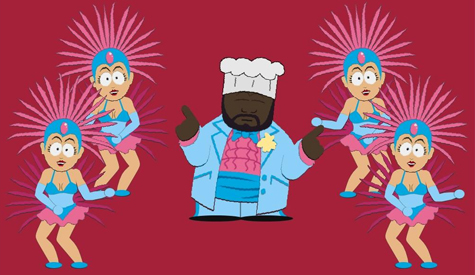
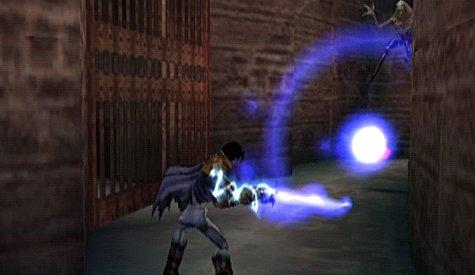
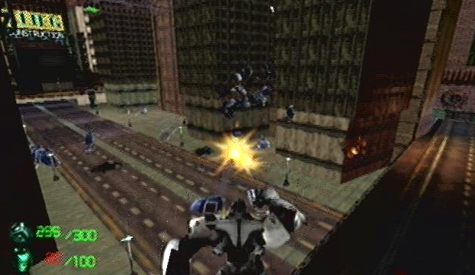
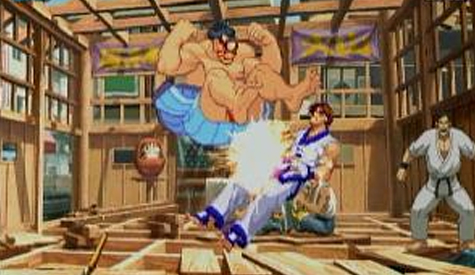
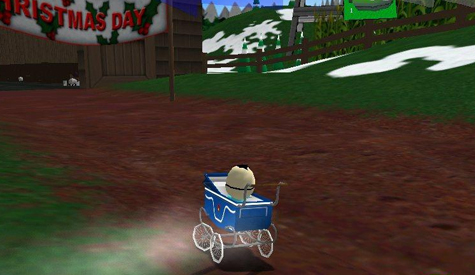
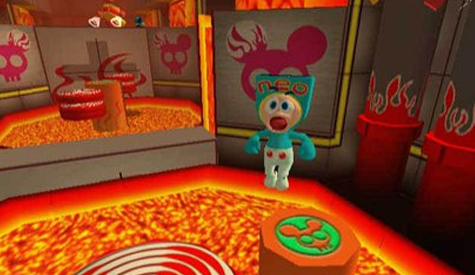

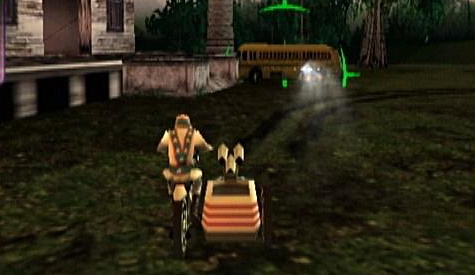
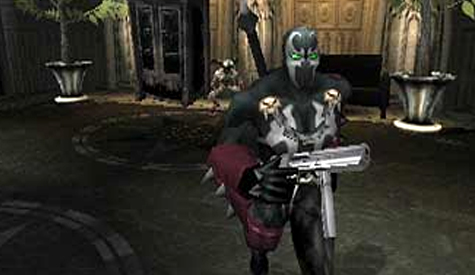
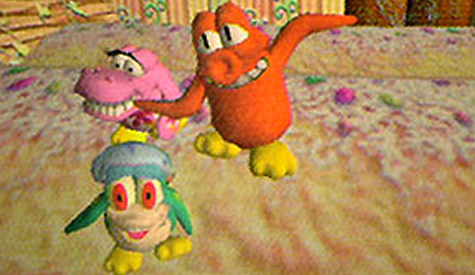

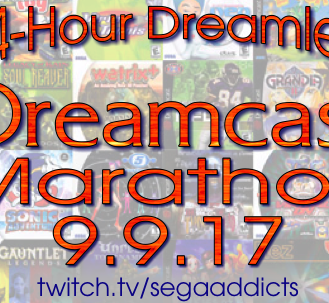
Cannot agree enough with Mike’s choice of Soul Reaver. The entire series needs to be highlighted to the uninitiated (who are many), and his little piece on it was very fitting! This game/series cannot be mentioned without an immediate follow up of the disc popping into the appropriate console for some blood sucking/soul ripping action.
Many games on this list gave me a smile, but the other that stuck out was the first CvS. I cannot tell you how blown away I was at this title when the GD rom first spun in my Dreamcast. The music, the graphics, the premise, the backgrounds(!) AH I loved every bit of it, and I think I mentioned before, this is the disc that you will probably find in my DC waiting to be played once more.
Spawn too!
Ah, a fellow Legacy of Kain fan, excellent. I don’t know what happened to Soul Reaver. It had quite a lot of attention prior to and during its release as well as getting very good reviews, yet here I am putting it on a list of ‘underrated’ games.
And yeah, I’ve actually been thinking of playing through it again on the Dreamcast as I don’t think I’ve beaten that particular version yet.